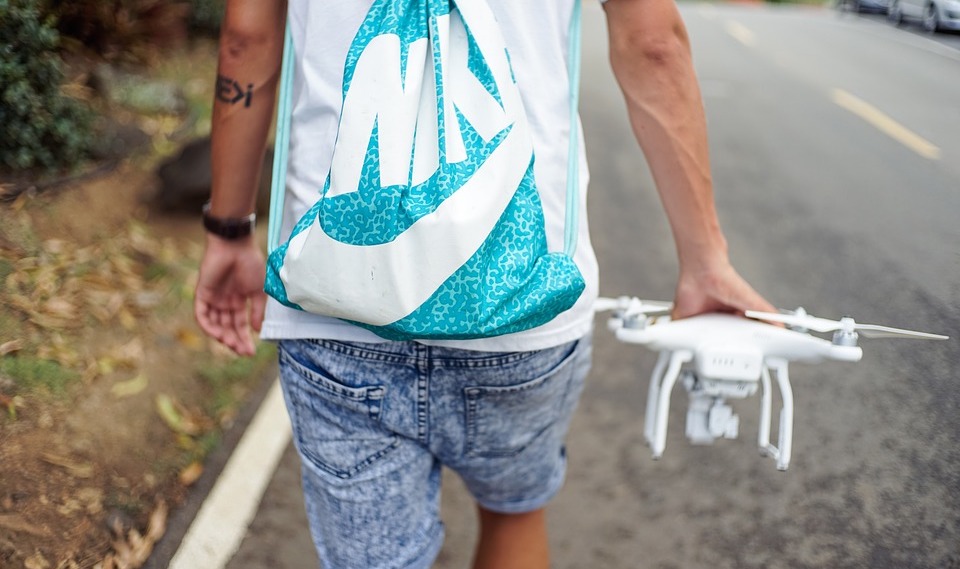How to Travel with a Drone
Of course we love our drones. And of course we love to take them wherever we go. But travelling with a drone is not always as simple as hitting the road and flying your drone with you. If you are travelling internationally or taking a domestic flight, then there are some regulations that you will have to be aware of.
1. Regulations related to the batteries
Most drones use either Lithium ion (Lion) or Lithium Polymer (Lipo) batteries. Travelers are usually allowed to carry these batteries with less than 100 watt hours (WH). If the battery exceeds 100 WH then you will be limited to just 2 batteries.
Note: Some batteries have the WH printed on the battery, but for others you may have to calculate it. The calculation is: WH = Volts x Ampere Hours (Ah)
Remember to carefully tape or use cling wrap to cover the terminals of the batteries and then use separate plastic bags for each battery before putting it in a fireproof battery bag. You can buy a battery bag online at a low price.
You should travel with rechargeable batteries in your carry-on baggage because if they cause a fire then the in-flight team will be able to quickly and effectively control the damage.
2. Checking in or carrying it on?
Most airlines will allow you to carry on or check in the drone according to your wish. I would suggest carrying it on because the airline may not take responsibility for damage or stolen drone. You will also save yourself the hassles of lost luggage, misplaced bags and the anxiety of putting your drone in the luggage hold of the aircraft, by simply carrying it on.
The use of a hard shell bag is good to avoid damage, but many drone users find soft bags to be better because of the lightweight. This is a matter of personal choice which I leave up to you.
3. Secure all data on your drone
Even if you are carrying it on, make sure that your drone and the data it holds is stored separately. Keep the data safely with you. This is especially if you do not want to lose the data on your drone.
4. Travel with a repair kit
There may be instances when your drone may require repair. You wouldn’t want to travel all the way with your drone only to realize that you cannot use it after a crash. Your repair kit can be checked in with the rest of your luggage.
5. Be prepared for drone crashes
While a repair kit is helpful, you may require extra propellers to ensure that your drone can fly once again after a crash that damages the propellers. This is an extra level of precaution and can be especially helpful if you use your drone professionally.
6. Prepare to be questioned by the TSA
Drones are relatively new for security personnel at airports. So plan to have your bag checked by the authority. The TSA may also question you regarding the batteries. Most of the times the process is smooth and answering truthfully will see you moving to the boarding section soon.
7. Carry your license and check drone laws in the destination country or city
Carrying your license when traveling with your drone within the country is good, but make sure you take it with you even when you travel internationally. While international standards differ and countries have their own laws related to drones, knowing that you are licensed to a use a drone in your country can make a difference when dealing with the local authorities.
A lot of European countries restrict you from flying drones within 50m of people, vehicles or property. This can make it pretty difficult for you to find a spot to fly your bird. So be sure to read up on the laws of the city and country that you are going to.
Most countries also have specific laws that do not allow you to fly near monuments, buildings of importance and other critical infrastructure. This will require you to learn about the monuments in the region you are travelling to so that you can comply with the laws.
If you are not sure about it, then ask the local authorities before you fly your drone. Being assured that you are complying with the laws will keep you away from legal complications.
8. You may be required to declare the drone while traveling
Some countries will require you to declare your drone at customs or you may have to register your drone before flying. Drone communities are a good place to learn if the country you are traveling to has specific regulations related to drones. Many personal experiences serve as a warning for others.
But I also find it best to talk directly with airport authorities regarding the use of the drone. Read regulations on the airline’s website too and check for laws in the country you will be traveling to.
Sometimes, the regulations are so strict that you may end up feeling that it is better to leave the drone home if you are going on a vacation. If you happen to be on visit which involves your drone and work, then try to get all approvals ahead of traveling to the country.
9. Is your drone insured?
There are chances that things may go wrong and your drone may suffer damage or loss. Insurance helps us find a solution to problems like these. You will have fewer worries if something happens to an expensive drone, if it is insured. It is best to travel with an insured drone so if the security personnel at airports want you to check in your drone, you can at least be sure that damages will be covered through the insurance.
While some countries like Norway do not regulate small drones for private use and has liberal rules for using large drones too, others like Sweden require a permit and liability insurance for small drones (less than 7kgs) which can only be flown 50meters from houses and roads and the country needs at least 3 people to be responsible for flying large drones.
This is why it is important to know the laws of the place before beginning to fly your drone there or before you pack your bags to travel there.


